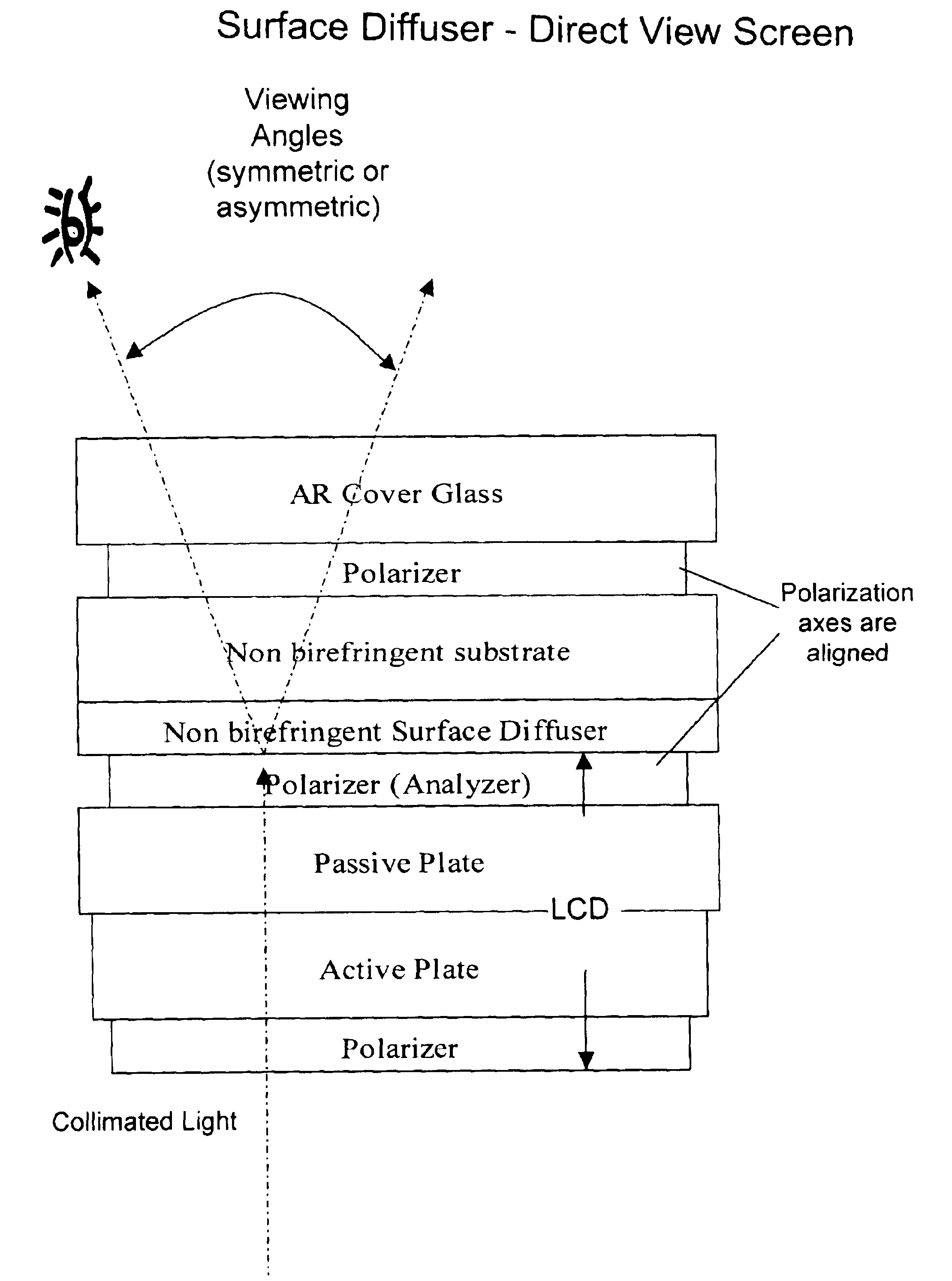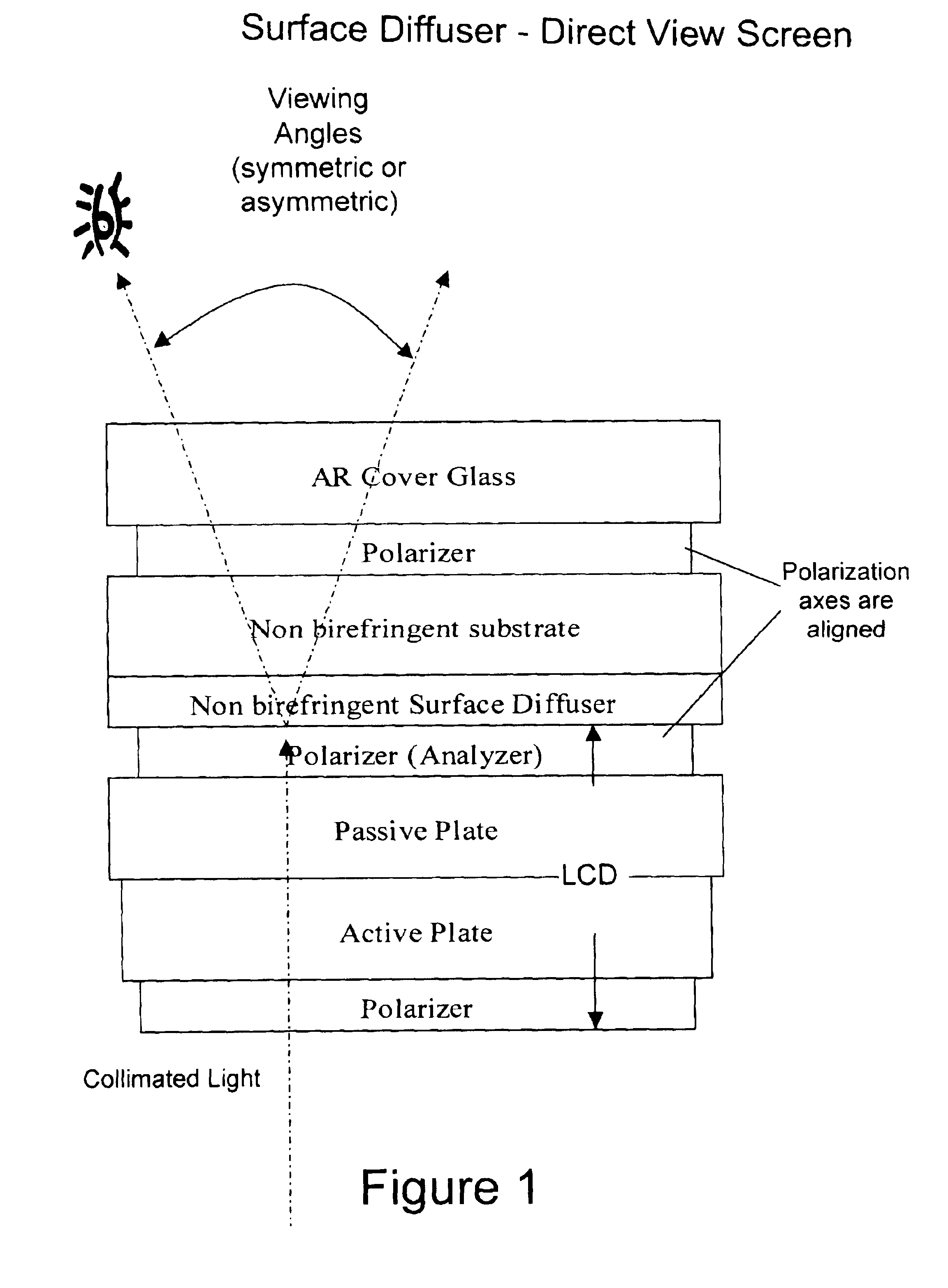High efficiency viewing screen
a viewing screen, high-efficiency technology, applied in the field of viewing screens, can solve the problems of high retroreflectance, unsuitable use, and exhibiting one or more deleterious effects, and achieve the effect of improving daylight readability
- Summary
- Abstract
- Description
- Claims
- Application Information
AI Technical Summary
Benefits of technology
Problems solved by technology
Method used
Image
Examples
Embodiment Construction
[0065]One embodiment of the present invention, shown in FIG. 1, was realized using a surface diffuser, like that described in U.S. Pat. Nos. 6,010,747 and 6,261,664, and manufactured by Wavefront Technology (Paramount, Calif.).
[0066]When used as a direct view screen as shown in FIG. 1 (without the polarizer and AR cover glass), the results were unimpressive in terms of luminance and contrast in ambient lighting. The test setup included the 10.4″ XGA resolution LCD in combination with the collimation structure shown in FIGS. 9 & 13 of U.S. Pat. No. 6,428,198, referenced earlier. The fibers used are ESKA 1.5 mm diameter, and the light source was a commercial off the shelf Wavien fiber optic illuminator. The resultant collimation incident on the LCD is shown in FIG. 2. A subsequent review of the diffuser using a Fourier scope revealed significant birefringence, thought to be mainly due to the film substrate. When the same diffuser was cast on a low birefringence substrate (cast acrylic...
PUM
| Property | Measurement | Unit |
|---|---|---|
| thickness | aaaaa | aaaaa |
| diameter | aaaaa | aaaaa |
| reflectance | aaaaa | aaaaa |
Abstract
Description
Claims
Application Information
 Login to View More
Login to View More - R&D
- Intellectual Property
- Life Sciences
- Materials
- Tech Scout
- Unparalleled Data Quality
- Higher Quality Content
- 60% Fewer Hallucinations
Browse by: Latest US Patents, China's latest patents, Technical Efficacy Thesaurus, Application Domain, Technology Topic, Popular Technical Reports.
© 2025 PatSnap. All rights reserved.Legal|Privacy policy|Modern Slavery Act Transparency Statement|Sitemap|About US| Contact US: help@patsnap.com



